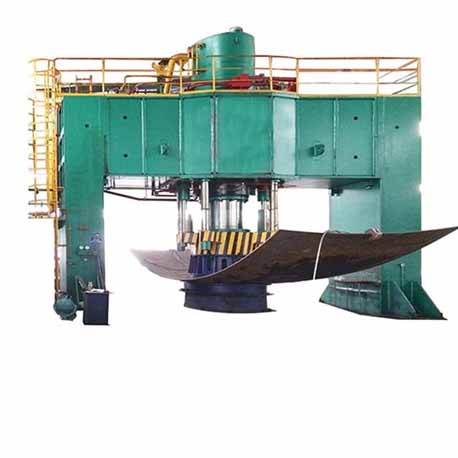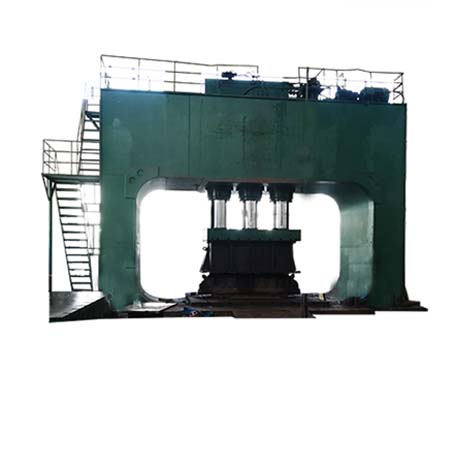
Pressure vessels composed of spherical heads are known for their excellent ability to withstand pressure. However, the connection structure between the spherical head and the cylindrical body is crucial for ensuring the vessel’s safe and efficient operation. This article delves into the importance of this connection, the advantages of spherical heads, and the challenges involved in their design and manufacturing.
Advantages of Spherical Heads in Design
Advantages of Spherical Heads in Design
Spherical heads are favored in pressure vessel design due to their superior load-bearing capabilities. Compared to other types of heads, they require thinner walls to handle the same diameter and pressure, which significantly reduces material costs. This makes them an ideal choice for high-pressure vessels. However, their connection to the cylindrical body presents a challenge because of the significant difference in wall thickness between the spherical head and the cylinder. This discrepancy must be addressed to ensure safe and stable operation. According to China’s national standard GB/T150, the weld connecting the cylinder and the spherical head is classified as a Class A welded joint, highlighting the critical nature of this connection.
Wall Thickness Difference: Spherical Shell vs. Cylinder
Wall Thickness Difference: Spherical Shell vs. Cylinder
When comparing the wall thickness of spherical heads and cylinders, the spherical head typically requires much less thickness—often about half that of the cylinder. Even considering manufacturing factors, the difference remains substantial. This variance requires careful consideration in the design and connection of both components, as an improper connection could compromise the vessel’s integrity.
Solutions for Connecting the Cylinder and Spherical Head
Solutions for Connecting the Cylinder and Spherical Head
The large difference in wall thickness between the cylinder and the spherical head means that a direct connection is not feasible. One method to resolve this is chamfering the cylinder’s edge, gradually reducing its thickness to match the spherical head. However, after chamfering, the cylinder's wall thickness must still meet design requirements. If the cylinder becomes too thin, the vessel could fail under pressure. To ensure safety, the un-chamfered part of the cylinder may need to be thicker than calculated, which increases material costs.
Cladding for Cylinder-End Connections
Cladding for Cylinder-End Connections
Cladding offers another solution, where the cylinder’s end is locally thickened to meet the design specifications. While cladding effectively resolves the thickness mismatch, it comes at a higher cost due to the expense of cladding materials. For some applications, particularly those requiring high pressure, cladding may still be the best option, though it raises the manufacturing cost.
Thickening the Spherical Shell
Thickening the Spherical Shell
A more cost-effective solution involves thickening the spherical shell itself. By extending the cylinder and adjusting the size of the spherical head, the wall thickness mismatch can be addressed. The cylinder’s edge can be chamfered to ensure a smooth transition, allowing the spherical shell to bear the load more evenly. This approach eliminates the need for expensive cladding while still ensuring the vessel meets required safety standards.
Chamfering Process for Pressure Vessels
Chamfering Process for Pressure Vessels
Chamfering is a critical process to ensure a smooth connection between the cylinder and the spherical head. Before chamfering, the pressure vessel’s surface must be clean and free of rust, oil, or other impurities to ensure the process goes smoothly. Chamfering should be done using precise tools to avoid unevenness or burrs, and the edge should transition smoothly to prevent sharp parts that could cause injury or equipment damage. After chamfering, a quality inspection ensures that the chamfer meets design specifications.
Additionally, safety is essential during the chamfering process, with operators wearing protective gear such as gloves and safety glasses to prevent injuries from sparks or debris. Ensuring the chamfering is correctly performed guarantees the vessel’s long-term reliability and operational safety.
Engineering Pressure Vessel Connections
Engineering Pressure Vessel Connections
The connection between the spherical head and the cylindrical body is one of the most critical aspects of pressure vessel design and manufacturing. Spherical heads provide excellent material savings and load-bearing capacity but require careful engineering of the connection to ensure structural integrity. By addressing the challenges of wall thickness differences through methods like chamfering, cladding, or thickening the spherical shell, manufacturers can create pressure vessels that meet safety and performance standards. These design considerations are vital to ensuring the vessel’s reliability and durability in high-pressure environments.






